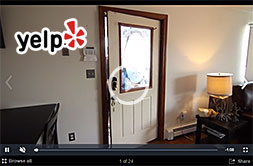
In the realm of home security, surveillance cameras play a pivotal role in safeguarding our homes and loved ones. As technology advances, the decision between hard-wired and WiFi surveillance cameras becomes a crucial consideration for homeowners seeking the most effective and convenient solution.
Hard-Wired Surveillance Cameras: Reliability and Stability
Hard-wired surveillance cameras are known for their reliability and stability. These cameras are physically connected to a central recording or monitoring system through cables, typically ethernet or coaxial cables. The wired connection ensures a constant and uninterrupted flow of data, minimizing the risk of signal interference or loss.
One of the key advantages of hard-wired cameras is their consistent high-quality video transmission. With a dedicated wired connection, these cameras deliver clear and real-time footage, making them an ideal choice for critical surveillance scenarios. Additionally, hard-wired systems are less susceptible to hacking or signal jamming, providing an extra layer of security for homeowners.
However, the installation of hard-wired cameras can be more labor-intensive and may require professional assistance, especially if the home is not pre-wired. The physical constraints of cables can limit the flexibility in camera placement, and the installation process may involve drilling and concealing wires.
WiFi Surveillance Cameras: Flexibility and Easy Installation
WiFi surveillance cameras, on the other hand, offer a more flexible and convenient solution. These cameras connect to your home’s wireless network, eliminating the need for physical cables. The absence of wires simplifies installation, making it a feasible DIY project for many homeowners. WiFi cameras can be easily repositioned, providing the flexibility to adapt to changing security needs.
In the realm of home security, surveillance cameras play a pivotal role in safeguarding our homes and loved ones. As technology advances, the decision between hard-wired and WiFi surveillance cameras becomes a crucial consideration for homeowners seeking the most effective and convenient solution.
Hard-Wired Surveillance Cameras: Reliability and Stability
Hard-wired surveillance cameras are known for their reliability and stability. These cameras are physically connected to a central recording or monitoring system through cables, typically ethernet or coaxial cables. The wired connection ensures a constant and uninterrupted flow of data, minimizing the risk of signal interference or loss.
One of the key advantages of hard-wired cameras is their consistent high-quality video transmission. With a dedicated wired connection, these cameras deliver clear and real-time footage, making them an ideal choice for critical surveillance scenarios. Additionally, hard-wired systems are less susceptible to hacking or signal jamming, providing an extra layer of security for homeowners.
However, the installation of hard-wired cameras can be more labor-intensive and may require professional assistance, especially if the home is not pre-wired. The physical constraints of cables can limit the flexibility in camera placement, and the installation process may involve drilling and concealing wires.
WiFi Surveillance Cameras: Flexibility and Easy Installation
WiFi surveillance cameras, on the other hand, offer a more flexible and convenient solution. These cameras connect to your home’s wireless network, eliminating the need for physical cables. The absence of wires simplifies installation, making it a feasible DIY project for many homeowners. WiFi cameras can be easily repositioned, providing the flexibility to adapt to changing security needs.


